-
 Bitcoin
Bitcoin $117900
0.31% -
 Ethereum
Ethereum $3766
0.28% -
 XRP
XRP $3.176
-0.31% -
 Tether USDt
Tether USDt $1.000
0.00% -
 BNB
BNB $795.6
1.51% -
 Solana
Solana $186.8
-1.09% -
 USDC
USDC $0.9999
-0.01% -
 Dogecoin
Dogecoin $0.2353
-1.33% -
 TRON
TRON $0.3226
1.49% -
 Cardano
Cardano $0.8172
-1.08% -
 Sui
Sui $4.178
3.06% -
 Hyperliquid
Hyperliquid $43.05
-3.39% -
 Stellar
Stellar $0.4367
-0.57% -
 Chainlink
Chainlink $18.62
1.47% -
 Hedera
Hedera $0.2828
6.63% -
 Bitcoin Cash
Bitcoin Cash $584.7
5.65% -
 Avalanche
Avalanche $24.81
2.53% -
 Litecoin
Litecoin $112.8
-0.88% -
 UNUS SED LEO
UNUS SED LEO $8.975
-0.08% -
 Shiba Inu
Shiba Inu $0.00001395
-1.07% -
 Toncoin
Toncoin $3.285
-1.05% -
 Ethena USDe
Ethena USDe $1.001
0.01% -
 Polkadot
Polkadot $4.123
0.76% -
 Uniswap
Uniswap $10.49
-0.18% -
 Monero
Monero $326.5
0.14% -
 Dai
Dai $0.9999
-0.02% -
 Bitget Token
Bitget Token $4.576
0.34% -
 Pepe
Pepe $0.00001247
-1.55% -
 Cronos
Cronos $0.1400
3.77% -
 Aave
Aave $295.1
-0.73%
How to set the price channel parameters? How many periods are used for short-term?
Setting effective price channel parameters is key for crypto traders using technical analysis to pinpoint buy and sell opportunities within short-term periods.
Jun 10, 2025 at 08:01 am
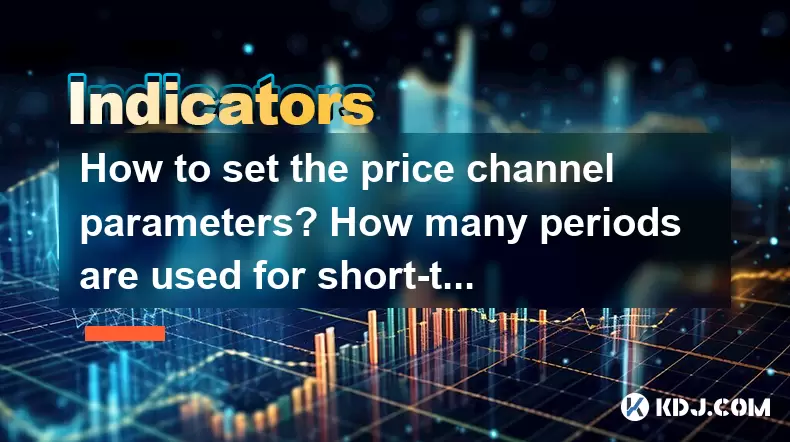
Setting the price channel parameters effectively is crucial for traders who rely on technical analysis to make informed decisions in the cryptocurrency market. A price channel, also known as a trading channel, is a tool that helps traders identify potential buy and sell points by highlighting the upper and lower boundaries of price movements over a specified period. In this article, we will delve into how to set these parameters correctly, focusing particularly on short-term periods which are commonly used in the crypto trading world.
Understanding Price Channels
Before setting the parameters, it is essential to understand what a price channel is. A price channel consists of two parallel trendlines: an upper trendline that connects the highs of the price action and a lower trendline that connects the lows. The space between these lines represents the channel where the price is expected to move. The effectiveness of a price channel depends on the correct selection of the period over which the channel is drawn.
Setting the Parameters for Price Channels
To set the parameters for a price channel, traders need to decide on the time frame and the type of channel they want to use. Here's how to go about it:
Choose the Time Frame: The first step is to select the time frame that aligns with your trading strategy. For short-term trading, this could be anywhere from a few minutes to a few days. The choice of time frame will directly affect the sensitivity of the channel to price movements.
Select the Channel Type: There are different types of channels, such as the standard deviation channel, the regression channel, and the simple moving average channel. For simplicity, we will focus on the simple moving average channel, which is widely used in the crypto market.
Determine the Periods: For short-term trading, the number of periods used to calculate the moving averages that form the channel's boundaries is crucial. Common short-term periods in cryptocurrency trading include 5, 10, 15, and 30 periods. The shorter the period, the more sensitive the channel will be to price fluctuations.
Calculating the Moving Averages
To set up a simple moving average channel for short-term trading, follow these steps:
Calculate the Simple Moving Average (SMA): Choose the number of periods (e.g., 10 periods) and calculate the SMA by summing up the closing prices of the last 10 periods and then dividing by 10.
Determine the Channel Width: Decide on the width of the channel. A common approach is to use a fixed percentage or a fixed number of standard deviations from the SMA. For example, you might set the upper band at 2% above the SMA and the lower band at 2% below the SMA.
Plot the Channel: Using the calculated SMA and the determined channel width, plot the upper and lower bands on your chart. The upper band will be the SMA plus the channel width, and the lower band will be the SMA minus the channel width.
Adjusting the Channel for Optimal Performance
Once the initial channel is set, it's important to adjust it for optimal performance. Here’s how to do it:
Monitor Price Action: Observe how the price interacts with the channel. If the price consistently breaks the upper or lower band, the channel might be too narrow. Conversely, if the price rarely touches the bands, the channel might be too wide.
Adjust the Periods: Experiment with different numbers of periods. For short-term trading, you might start with a 10-period SMA and adjust it to 5 or 15 periods based on the price action.
Refine the Channel Width: Adjust the percentage or standard deviation used to calculate the channel width. This can help the channel better fit the current market volatility.
Using the Price Channel in Trading
Once the price channel is set and adjusted, traders can use it to make trading decisions. Here’s how:
Identify Entry Points: When the price touches the lower band of the channel, it may be a good time to buy, as the price is expected to bounce back towards the upper band. Conversely, when the price touches the upper band, it might be a good time to sell or short, as the price is expected to fall back towards the lower band.
Confirm with Other Indicators: While the price channel is a powerful tool, it should not be used in isolation. Confirm channel signals with other technical indicators such as the Relative Strength Index (RSI) or the Moving Average Convergence Divergence (MACD) to increase the probability of successful trades.
Set Stop-Loss and Take-Profit Levels: Use the channel to set stop-loss and take-profit levels. For example, if you buy near the lower band, you might set your stop-loss just below the lower band and your take-profit near the upper band.
Practical Example of Setting a Short-Term Price Channel
Let's walk through a practical example of setting a short-term price channel for Bitcoin (BTC) using a 15-minute chart:
Choose the Time Frame: We will use a 15-minute chart for our short-term trading strategy.
Select the Channel Type: We will use a simple moving average channel.
Determine the Periods: We will start with a 10-period SMA.
Calculate the SMA: For example, if the closing prices of the last 10 periods are 29000, 29100, 29200, 29300, 29400, 29500, 29600, 29700, 29800, and 29900, the SMA would be (29000 + 29100 + 29200 + 29300 + 29400 + 29500 + 29600 + 29700 + 29800 + 29900) / 10 = 29450.
Determine the Channel Width: We will set the upper band at 2% above the SMA and the lower band at 2% below the SMA. So, the upper band would be 29450 1.02 = 30039, and the lower band would be 29450 0.98 = 28861.
Plot the Channel: Plot the SMA at 29450, the upper band at 30039, and the lower band at 28861 on the 15-minute chart.
Adjust the Channel: Monitor the price action and adjust the periods and channel width as needed. For example, if the price consistently breaks the upper band, you might increase the channel width to 3% or decrease the number of periods to 5.
Frequently Asked Questions
Q: Can price channels be used for long-term trading in the cryptocurrency market?
A: Yes, price channels can be used for long-term trading by adjusting the time frame and the number of periods. For long-term trading, you might use daily or weekly charts and longer periods such as 50 or 200 periods for the moving averages.
Q: How do I know if the price channel I set is too wide or too narrow?
A: If the price consistently breaks the upper or lower band, the channel might be too narrow. If the price rarely touches the bands, the channel might be too wide. Adjust the channel width and the number of periods until the price action fits well within the channel.
Q: Are there any other technical indicators that work well with price channels?
A: Yes, other technical indicators that work well with price channels include the Relative Strength Index (RSI), the Moving Average Convergence Divergence (MACD), and Bollinger Bands. These indicators can help confirm signals generated by the price channel.
Q: Can I use price channels for all cryptocurrencies, or are they better suited for certain types?
A: Price channels can be used for all cryptocurrencies. However, they might be more effective for cryptocurrencies with higher liquidity and trading volume, as these assets tend to have more predictable price movements that fit well within a channel.
Disclaimer:info@kdj.com
The information provided is not trading advice. kdj.com does not assume any responsibility for any investments made based on the information provided in this article. Cryptocurrencies are highly volatile and it is highly recommended that you invest with caution after thorough research!
If you believe that the content used on this website infringes your copyright, please contact us immediately (info@kdj.com) and we will delete it promptly.
- Cryptos to Watch in 2025: Punisher Coin, Chainlink, and the Altcoin Arena
- 2025-07-27 18:30:13
- Bitcoin, Altcoins, Rebound: Navigating the Crypto Comeback Trail
- 2025-07-27 18:30:13
- Ethereum, Bitcoin, and Altcoins: A Shift in Crypto Tides?
- 2025-07-27 19:10:13
- Windtree Therapeutics' Bold BNB Strategy: A $520 Million Crypto Play
- 2025-07-27 19:10:13
- Solana, Staking, and Unilabs: What's the Buzz in the Crypto Space?
- 2025-07-27 16:50:13
- VeChain, HBAR, Remittix: Navigating the Crypto Landscape in 2025
- 2025-07-27 17:10:12
Related knowledge
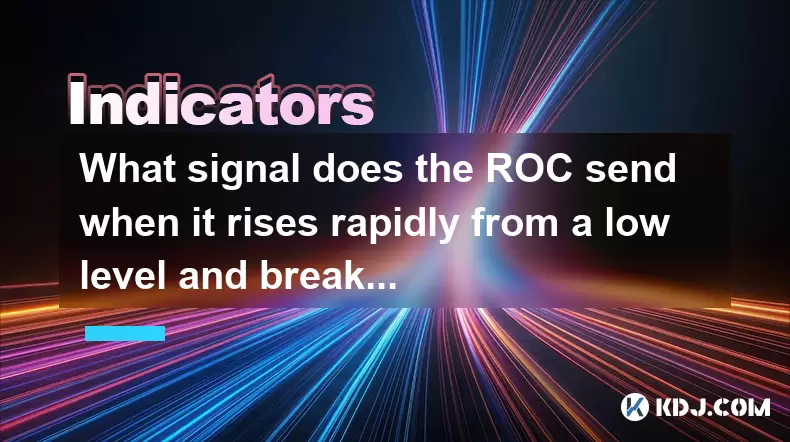
What signal does the ROC send when it rises rapidly from a low level and breaks through the zero axis?
Jul 27,2025 at 10:15am
Understanding the Rate of Change (ROC) IndicatorThe Rate of Change (ROC) is a momentum-based oscillator used in technical analysis to measure the perc...
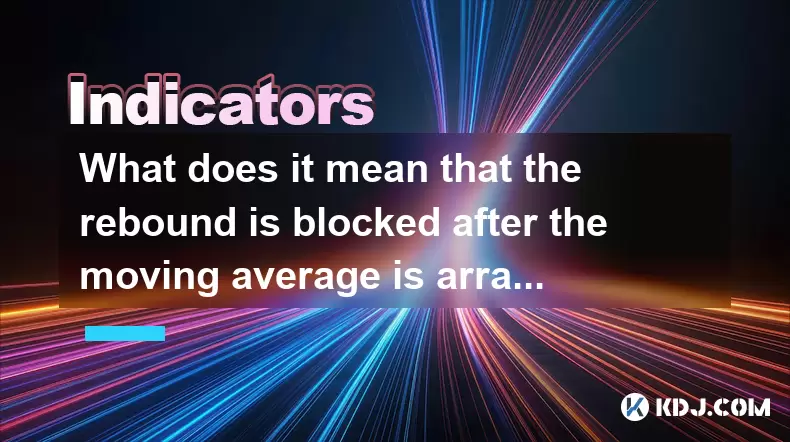
What does it mean that the rebound is blocked after the moving average is arranged in a short position for the first time?
Jul 26,2025 at 10:51am
Understanding the Short-Term Moving Average ConfigurationWhen traders refer to a 'short position arrangement' in moving averages, they are describing ...
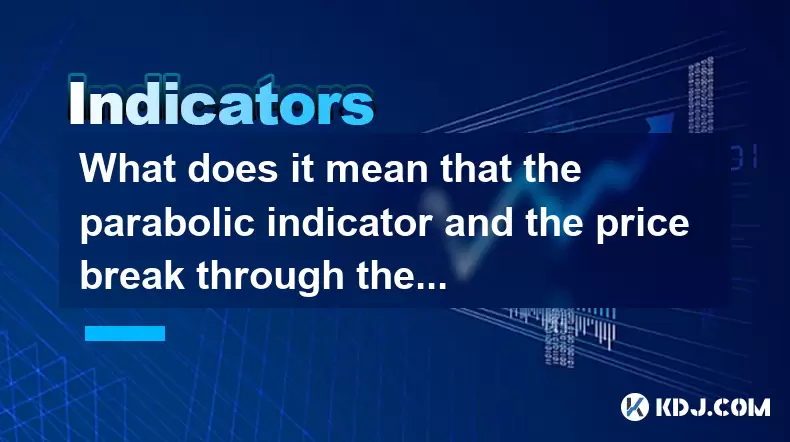
What does it mean that the parabolic indicator and the price break through the previous high at the same time?
Jul 26,2025 at 07:22pm
Understanding the Parabolic Indicator (SAR)The Parabolic SAR (Stop and Reverse) is a technical analysis tool developed by J. Welles Wilder to identify...
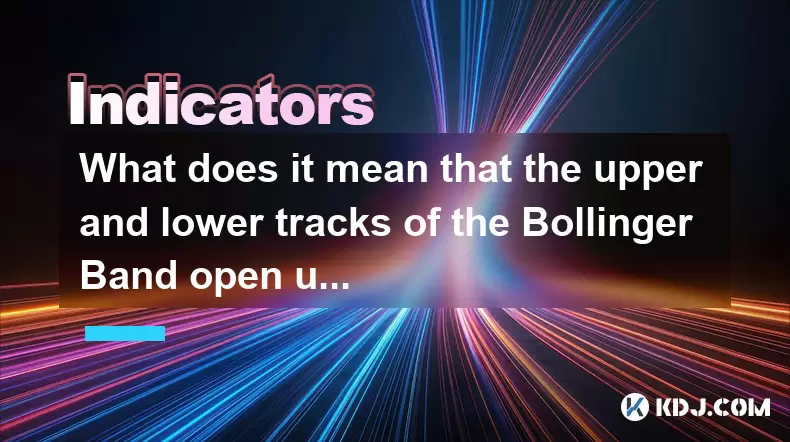
What does it mean that the upper and lower tracks of the Bollinger Band open upward at the same time?
Jul 27,2025 at 02:49pm
Understanding the Bollinger Band StructureThe Bollinger Band is a widely used technical analysis tool developed by John Bollinger. It consists of thre...
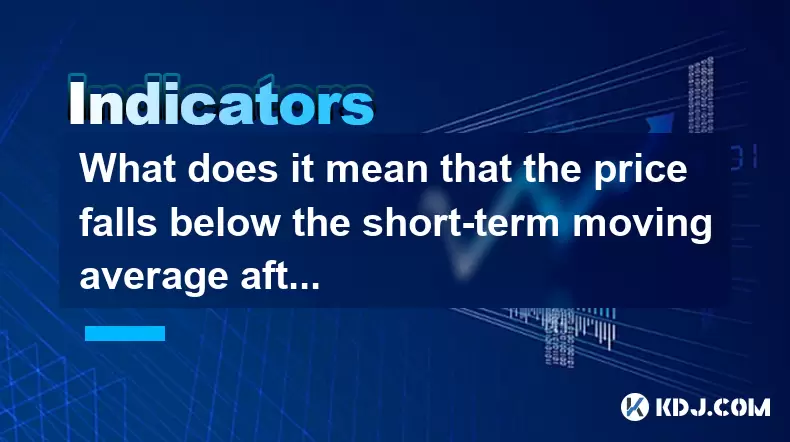
What does it mean that the price falls below the short-term moving average after the RSI top divergence?
Jul 26,2025 at 11:01pm
Understanding RSI Top Divergence in Cryptocurrency TradingThe Relative Strength Index (RSI) is a momentum oscillator widely used in cryptocurrency tra...
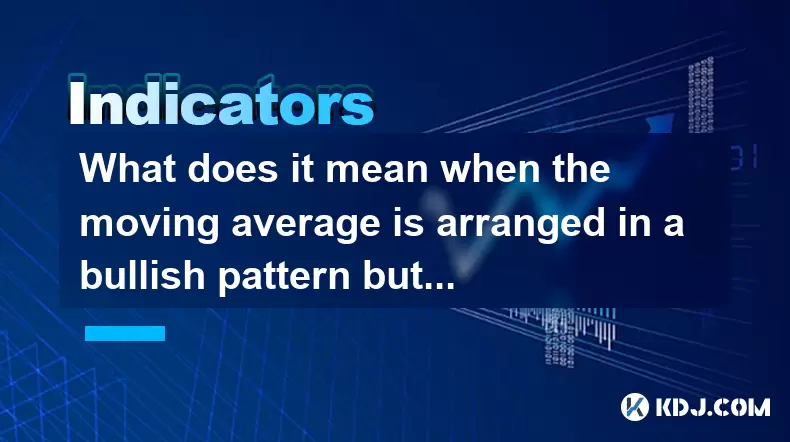
What does it mean when the moving average is arranged in a bullish pattern but the MACD bar is shortened?
Jul 27,2025 at 06:07am
Understanding the Bullish Moving Average PatternWhen traders observe a bullish moving average pattern, they typically refer to a configuration where s...

What signal does the ROC send when it rises rapidly from a low level and breaks through the zero axis?
Jul 27,2025 at 10:15am
Understanding the Rate of Change (ROC) IndicatorThe Rate of Change (ROC) is a momentum-based oscillator used in technical analysis to measure the perc...

What does it mean that the rebound is blocked after the moving average is arranged in a short position for the first time?
Jul 26,2025 at 10:51am
Understanding the Short-Term Moving Average ConfigurationWhen traders refer to a 'short position arrangement' in moving averages, they are describing ...

What does it mean that the parabolic indicator and the price break through the previous high at the same time?
Jul 26,2025 at 07:22pm
Understanding the Parabolic Indicator (SAR)The Parabolic SAR (Stop and Reverse) is a technical analysis tool developed by J. Welles Wilder to identify...

What does it mean that the upper and lower tracks of the Bollinger Band open upward at the same time?
Jul 27,2025 at 02:49pm
Understanding the Bollinger Band StructureThe Bollinger Band is a widely used technical analysis tool developed by John Bollinger. It consists of thre...

What does it mean that the price falls below the short-term moving average after the RSI top divergence?
Jul 26,2025 at 11:01pm
Understanding RSI Top Divergence in Cryptocurrency TradingThe Relative Strength Index (RSI) is a momentum oscillator widely used in cryptocurrency tra...

What does it mean when the moving average is arranged in a bullish pattern but the MACD bar is shortened?
Jul 27,2025 at 06:07am
Understanding the Bullish Moving Average PatternWhen traders observe a bullish moving average pattern, they typically refer to a configuration where s...
See all articles

























































































